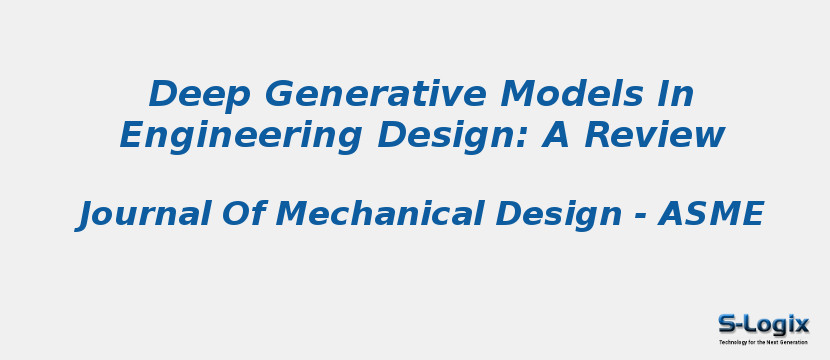Research Area: Machine Learning
Automated design synthesis has the potential to revolutionize the modern engineering design process and improve access to highly optimized and customized products across countless industries. Successfully adapting generative machine learning to design engineering may enable such automated design synthesis and is a research subject of great importance. We present a review and analysis of deep generative machine learning models in engineering design. Deep generative models (DGMs) typically leverage deep networks to learn from an input dataset and synthesize new designs. Recently, DGMs such as feedforward neural networks (NNs), generative adversarial networks (GANs), variational autoencoders (VAEs), and certain deep reinforcement learning (DRL) frameworks have shown promising results in design applications like structural optimization, materials design, and shape synthesis. The prevalence of DGMs in engineering design has skyrocketed since 2016. Anticipating the continued growth, we conduct a review of recent advances to benefit researchers interested in DGMs for design. We structure our review as an exposition of the algorithms, datasets, representation methods, and applications commonly used in the current literature. In particular, we discuss key works that have introduced new techniques and methods in DGMs, successfully applied DGMs to a design-related domain, or directly supported the development of DGMs through datasets or auxiliary methods. We further identify key challenges and limitations currently seen in DGMs across design fields, such as design creativity, handling constraints and objectives, and modeling both form and functional performance simultaneously. In our discussion, we identify possible solution pathways as key areas on which to target the future work.
Keywords:
Deep Generative Models
Engineering Design
deep reinforcement learning
variational autoencoders
feedforward neural networks (NNs)
generative adversarial networks (GANs)
Author(s) Name: Lyle Regenwetter, Amin Heyrani Nobari, Faez Ahmed
Journal name: Journal of Mechanical Design
Conferrence name:
Publisher name: The American Society of Mechanical Engineers
DOI: 10.1115/1.4053859
Volume Information: Volume 144, Issue 7 July 2022
